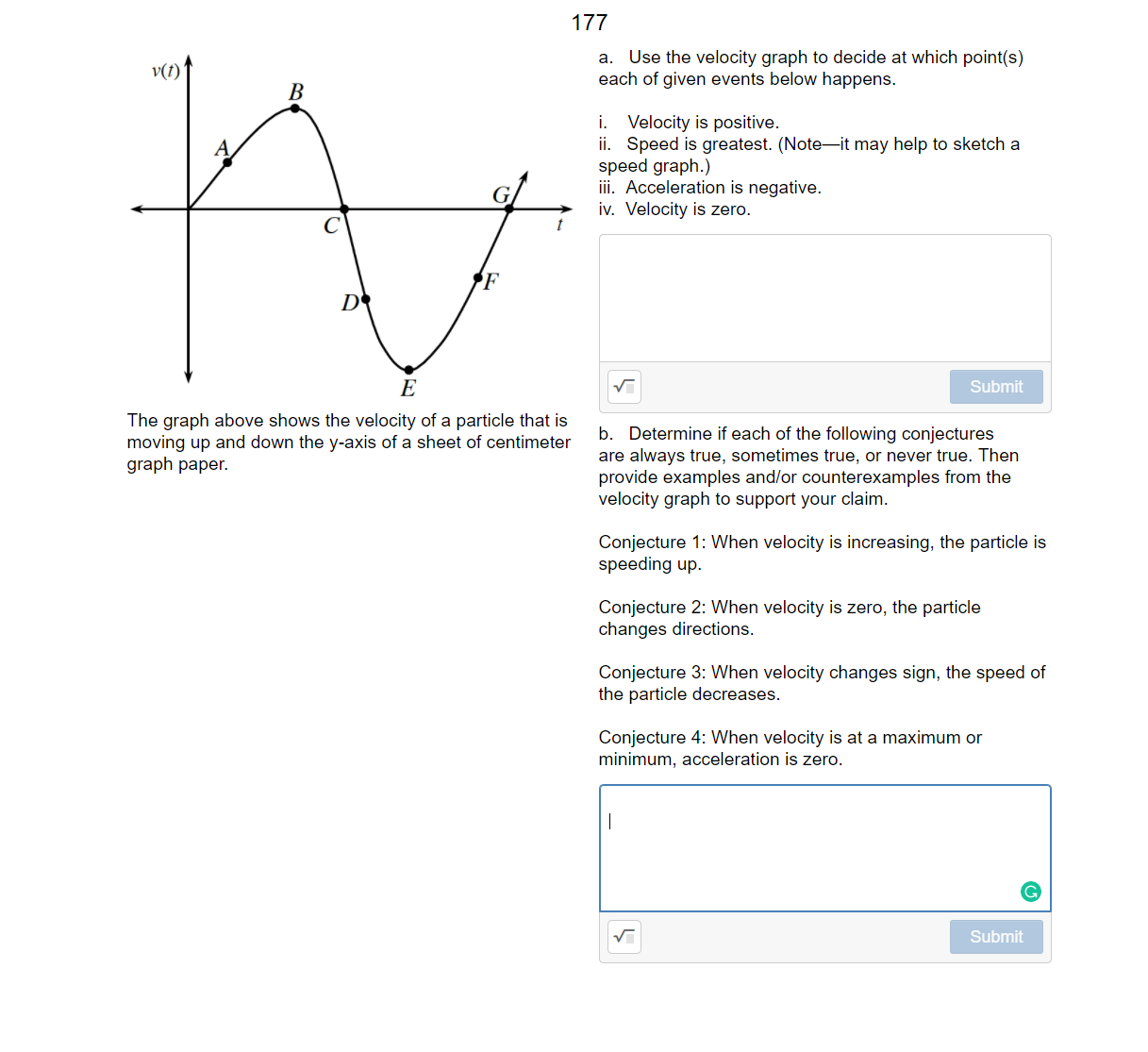The graph above shows the velocity of a particle that is moving up and down the y-axis of a sheet of centimeter graph paper. b. Determine if each of the following conjectures are always true, sometimes true, or never true. Then provide examples and/or counterexamples from the velocity graph to support your claim. Conjecture 1: When velocity is increasing, the particle is speeding up. Conjecture 2: When velocity is zero, the particle changes directions. Conjecture 3: When velocity changes sign, the speed of the particle decreases. Conjecture 4: When velocity is at a maximum or minimum, acceleration is zero.
The graph above shows the velocity of a particle that is moving up and down the y-axis of a sheet of centimeter graph paper. b. Determine if each of the following conjectures are always true, sometimes true, or never true. Then provide examples and/or counterexamples from the velocity graph to support your claim. Conjecture 1: When velocity is increasing, the particle is speeding up. Conjecture 2: When velocity is zero, the particle changes directions. Conjecture 3: When velocity changes sign, the speed of the particle decreases. Conjecture 4: When velocity is at a maximum or minimum, acceleration is zero.
Related questions
Question
Please explain as detail as possible, thanks.

Transcribed Image Text:The graph above shows the velocity of a particle that is
moving up and down the y-axis of a sheet of centimeter
graph paper.
b. Determine if each of the following conjectures
are always true, sometimes true, or never true. Then
provide examples and/or counterexamples from the
velocity graph to support your claim.
Conjecture 1: When velocity is increasing, the particle is
speeding up.
Conjecture 2: When velocity is zero, the particle
changes directions.
Conjecture 3: When velocity changes sign, the speed of
the particle decreases.
Conjecture 4: When velocity is at a maximum or
minimum, acceleration is zero.
Expert Solution
This question has been solved!
Explore an expertly crafted, step-by-step solution for a thorough understanding of key concepts.
This is a popular solution!
Trending now
This is a popular solution!
Step by step
Solved in 3 steps with 2 images
